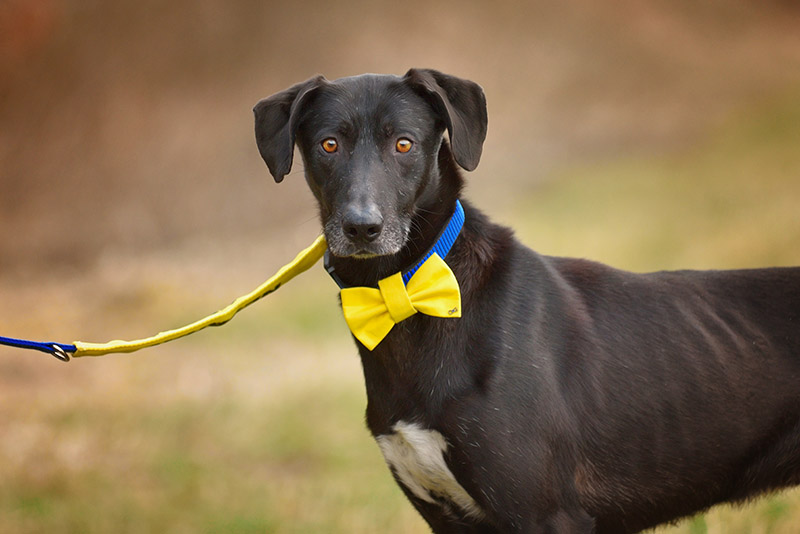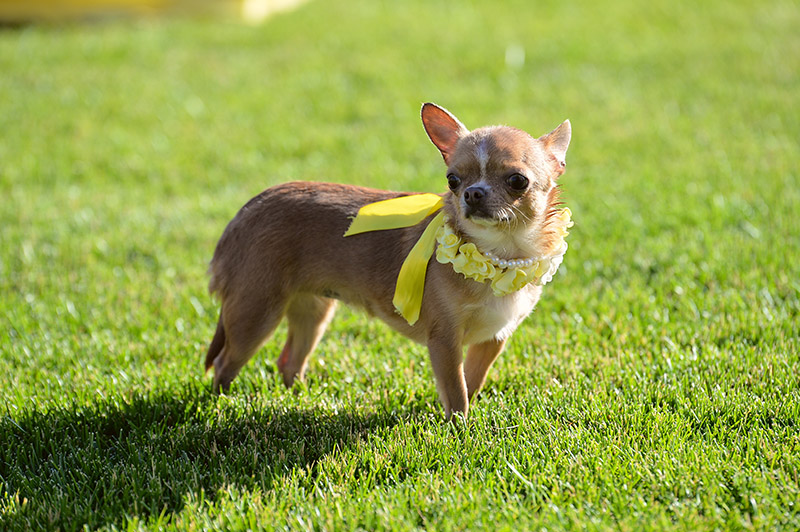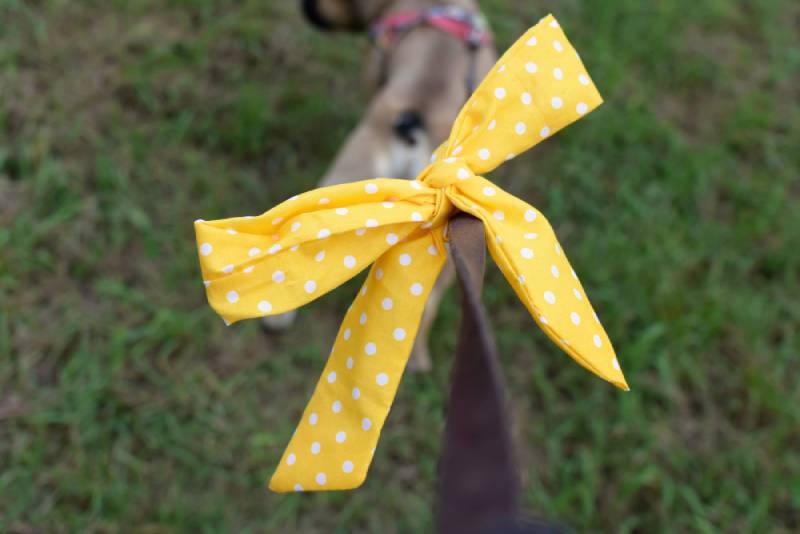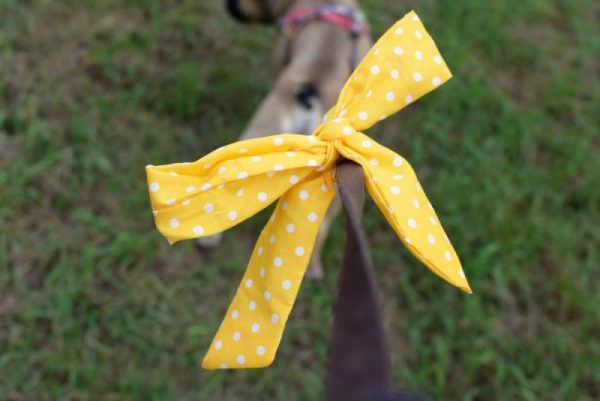Click to Skip Ahead
If you’ve ever been out for a walk, with or without a pet, and noticed a dog with a bright yellow ribbon tied around their collar or leash, you likely want to understand why. Is this just a fashion statement from an owner in love with the color yellow, or does it have a special meaning?
A yellow ribbon on a dog’s leash or collar can indicate that the dog has a nervous disposition and needs space; it’s like a “proceed with caution” yellow light.
So, what kind of dog might use a yellow ribbon, and how did this whole thing start?
What Does a Yellow Ribbon on a Dog Mean?
Essentially, a yellow ribbon on a dog’s leash indicates that they get nervous around other people or dogs and that they need to be given space.
Also, it doesn’t necessarily have to be a ribbon. Some dog owners use yellow bandanas or purchase yellow collars, leashes, and harnesses.

What Kinds of Dogs Might Use a Yellow Ribbon?
You might assume that a dog that needs space is aggressive, but that is not always the case. Some dogs are reactive and fearful and can be snappy in uncertain circumstances. This occurs most often in dogs that have an abusive and neglectful past or that didn’t receive proper socialization.
The following are dogs that might wear a yellow ribbon:
- Service dogs in training that shouldn’t be distracted
- Rescue dogs with traumatized pasts that are adapting to their new families
- Dogs that have visual or hearing impairments
- Senior dogs with duller senses
- Dogs with health conditions that entail feeling pain when touched
- Dogs with negative experiences with other dogs (a kind of PTSD)
- Skittish dogs that are nervous on a leash and around other humans and animals
Dogs that might need a yellow ribbon aren’t necessarily aggressive. However, if they are skittish or anxious dogs, they might display fear aggression. This occurs when a dog feels cornered, and all they want is to be left alone. This is where the yellow ribbon can be quite helpful.
Here’s What to Do When You See a Yellow Ribbon on a Dog’s Leash
The obvious answer here is to give the dog space. You won’t know what the situation is or what triggers the animal, but that doesn’t matter. What’s important is not to engage with the dog, as this will make things easier for everyone, especially the dog.
You should also avoid eye contact and turn your body slightly away as you pass. Don’t speak to the owner, if possible. If you are walking your own dog, ensure that they give the other dog space—you’ll want to aim for at least several feet of space between them. Remember that the dog’s owner is likely anxious every time they walk their pet, so make things as stress-free for them and their dog as possible.
It’s always a good idea to speak to a dog’s owner before attempting an interaction, whether they have a yellow ribbon or not.

How Did the Yellow Ribbon Project Begin?
It was first started in 2000 in Australia by dog trainer Terry Ryan, who used the yellow ribbon in her classes. It turned into a campaign used in Australian dog clubs and started to spread nationwide and then globally: Eva Oliversson, a dog behaviorist, began the Yellowdog program in Sweden in 2012, and The Yellow Dog Project took off in North America when Canadian dog trainer Tara Palardy brought it there.
The Importance of Canine Body Language
You should understand a dog’s body language, particularly the signals that they send when they are fearful:
- Licking the lips
- Ears pinning flat to the head
- Showing the whites of the eyes (whale eye)
- Panting
- Pacing
- Avoiding eye contact
- Whining, barking, growling
- Bristling hair along the back
If these signs are misunderstood or ignored, the dog will start showing more obvious signs, such as lunging and biting.
Unfortunately, many of the signals that a dog is upset can easily be overlooked by people who don’t understand the body language.

Conclusion
The Yellow Dog Project is not quite as well-known as it should be, so it’s up to people with yellow ribbon dogs to spread the word. If you put one on your dog, people in your neighborhood will get to know you and your dog on your walks and will recognize the yellow ribbon.
It’s essential that you also respect the yellow ribbon when you see it; even if it ends up just being someone who likes the color yellow, you should be safe and respectful, regardless. Don’t forget that the telltale ribbon might be in the form of a bandana or a yellow collar and leash.
Read more on leashes and training:
- Is Your Dog Ready to Go Off Leash?
- Have You Ever Met a Dog Who Is Terrified of Leashes?
- That’s Not a Muzzle on My Dog! It’s Called a “Gentle Leader”
Featured Image Credit: Firn, Shutterstock











